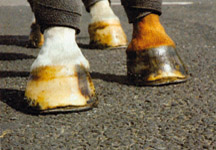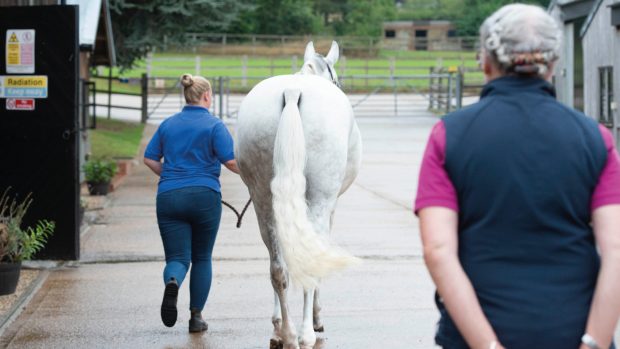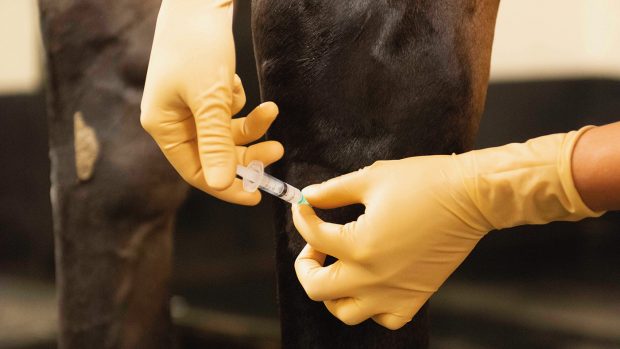More articles on joint problems
Find an equine vet
Many cases of mystery lameness, that may once have been attributed to navicular syndrome, are now thought to be caused by injuries to the distal interphalangeal (DIP) or coffin joint.
What is the coffin joint?
The coffin joint comprises the middle phalanx (short pastern bone), the distal phalanx (coffin or pedal bone) and the navicular bone.
It has a voluminous joint capsule that extends upwards above the coronary band.
Identifying coffin joint problems
Identification of a coffin joint problem is dependent on localising pain to the joint using nerve blocks.
X-rays are required but it is important to recognise that the shape of the bones in this region of the foot varies from horse to horse.
In some animals, there is a small piece of bone known as a separate centre of ossification, which can be present quite innocuously and must be differentiated from a fracture fragment.
In heavier breeds, the bony protuberances on the middle phalanx can be large and must not be confused with new bone formation due to osteoarthritis.
Once it has been established that pain is originating in the coffin joint, it is then necessary to pinpoint the exact nature of the injury.
For the full article on coffin joint problems, see the current issue of Horse & Hound (29 October, ’09)
Looking for more articles on joint problems?
Find an equine vet near you




